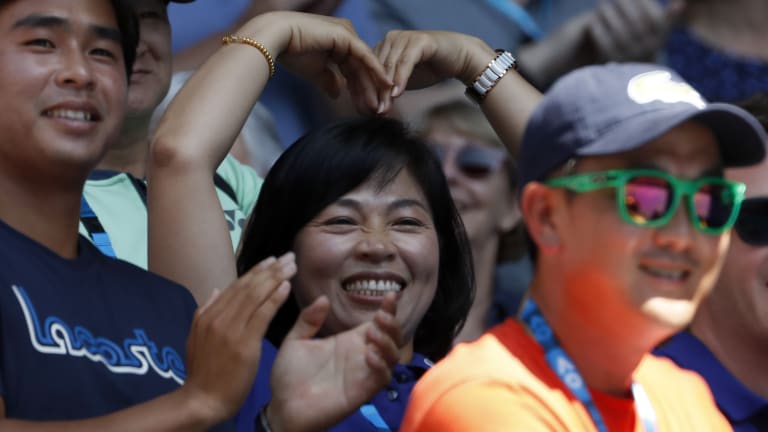The game gets an unlikely new star—Hyeon Chung’s mom
How long will it be before we see kids around the world putting on little rectangular glasses before they walk onto their local tennis courts? After watching Hyeon Chung become the first Korean player to reach a Grand Slam semifinal at the Australian Open, they may want to try it even if their eyesight is perfect.
Chung has made himself into a star over the last 10 days in Melbourne. Just as Li Na did in the same arena at the beginning of this decade, he has extended the sport’s reach into another Asian country. Also like Li Na, he has managed to make one of his relatives famous in the process. With her, it was long-suffering husband Dennis; with Chung, it’s his mother, Kim Young-mi. After Chung introduced her to the crowd in Rod Laver Arena on Wednesday, her two-armed heart salute—it also means "fight" in Korea—went viral.
“The Professor,” Chung has been called, and he has been appealingly down to earth in all of his interviews. But he also has a confidence and swagger that belies his studious look. When he was asked how he survived three hours with Novak Djokovic on Monday, Chung chuckled and said, “I’m younger than Novak, what do I care?” And when he drilled a winner to go up two sets to none over Tennys Sandgren in their quarterfinal on Wednesday, Chung flapped his arms in the universal “You got to get up!” signal as he walked, backwards, to the sideline.
That swagger should serve Chung well. It has already helped him close out one of his idols, Novak Djokovic, in straight sets, and it helped him avoid tripping as he crossed the finish line on Wednesday. While their match only went three sets, Chung-Sandgren may have been the most entertaining contest of the men’s event. Both guys served big, gunned their forehands judiciously, ran down seemingly ungettable balls, and raced to the net as soon as they could. If this is the kind of tennis that Melbourne’s quickened courts are going to produce, the sport should be all for it.

